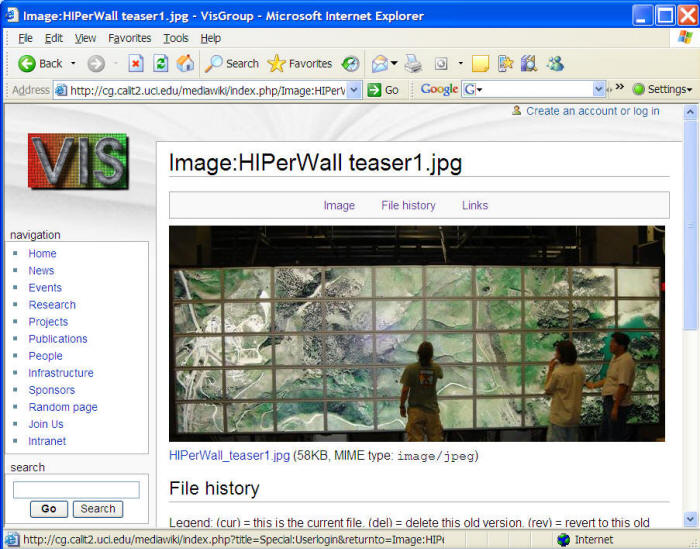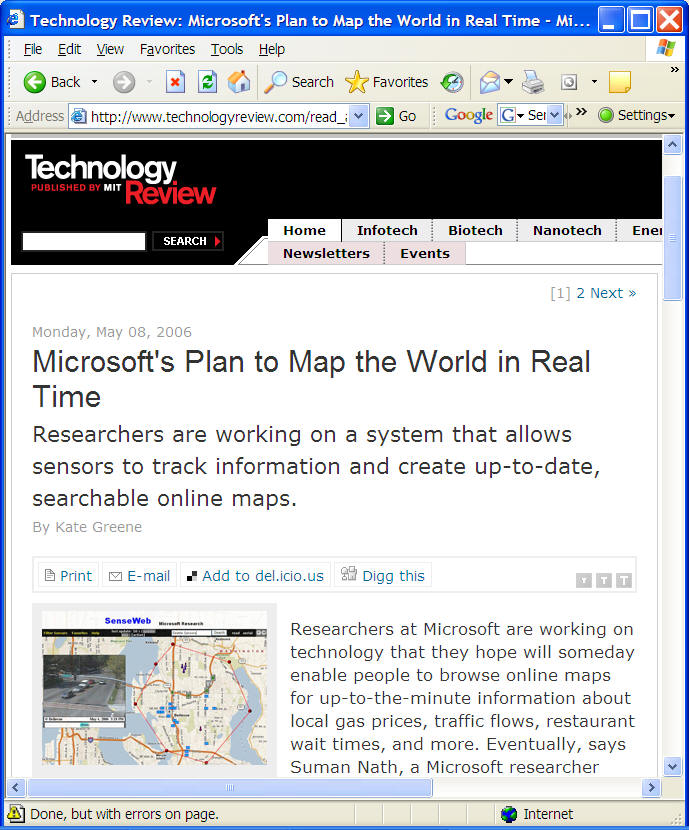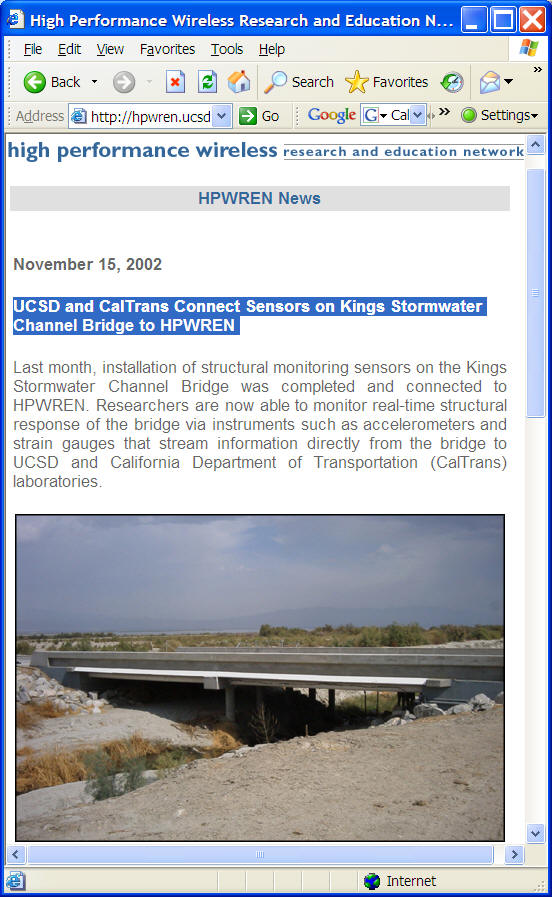Geographic Information Science and Spatial Reasoning
(GEOG 104) (A General Education [GE] Course) Spring 2018
|
Geographic Information Science and Spatial Reasoning (GEOG 104) (A General Education [GE] Course) Spring 2018 |
|
| |
| Geographic Information Science and Spatial Reasoning (GEOG 104) (A General Education [GE] Course) Fall 2015 |
Unit 13
The Future of Geospatial Information Technology
GISystems and GIScience
"Geographic information systems support and drive GIScience.” (textbook pp 472)
“Geographic information science drives the development of GISystems.” (textbook pp 474)
The Future of GIS
Extreme Technology

Figure 12. Smart Dust
(http://robotics.eecs.berkeley.edu/~pister/SmartDust/)
Figure 13. A Supercomputer at Ames Research Center
(http://en.wikipedia.org/wiki/Image:Columbia_Supercomputer_-_NASA_Advanced_Supercomputing_Facility.jpg )
Cal-IT2 California Institute for Telecommunications and Information Technology
http://www.calit2.net/index.php
November 10, 2008
Scalable City Trailer
Exploring the Link Between Digital and Literary
Art
Speaker: Sheldon Brown, Calit2 Artist in Residence, Director, UCSD Center for
Research in Computing and the Arts
[news
release]
[video]Length:
4:04
The Highly Interactive Parallelized Display Wall project (HIPerWall) http://cg.calit2.uci.edu/mediawiki/index.php/Research_Projects:_HIPerWall

Sensor Web
http://en.wikipedia.org/wiki/Sensor_Web

Figure 14. Sensor Web (http://aaaprod.gsfc.nasa.gov/sensorweb/)
http://www.technologyreview.com/read_article.aspx?id=16781&ch=infotech

http://hpwren.ucsd.edu/news/021115.html

Visualization

Figure 15. IBM Open Visualization Data Explorer
(http://www.research.ibm.com/dx/)
New Research Direction of Internet GIS
Grid Computing and Semantic Web.
PowerPoint slides created by Tong Zhang.
GIS Applications
The most popular, successful and promising areas:
l Homeland security and geo-spatial intelligence (Fig. 16);
l Anti-crimes (Fig. 17);
A list of crime analysis tools (http://www.iaca.net/Software.asp)
l Public health (Fig. 18);
l Environment and natural resource management (Fig. 19);
l Transportation (Fig. 20);
The Future Directions of GIS
Multiple versions from various institues.
|
UCGIS 1996 |
|
| Spatial Data Acquisition and Integration; |
Distribute Computing; Extensions to Geographic Representations; |
Cognition of Geographic Information; Interoperability of Geographic Information; |
Scale; |
Spatial Analysis and Modeling in a GIS Environment; |
The Future of the Spatial Information Infrastructure; |
Uncertainty in Geographic Data and GIS-based Analyses; GIS and Society. |
UCGIS 2004
Spatial Data Acquisition and Integration; Cognition of Geographic Information; Scale; Extensions to Geographic Representations; Spatial Analysis and Modeling in a GIS Environment; Research Issues on Uncertainty in Geographic Data and GIS-Based Analysis; The Future of the Spatial Information Infrastructure; Distributed and Mobile Computing; GIS and Society: Interrelation, Integration, and Transformation; Geographic Visualization; Ontological Foundations for Geographic Information Science; Remotely-Acquired Data and Information in GIScience; Geospatial Data Mining and Knowledge Discovery.
David Mark (SUNY-Baffalo)
GIS Data Integration;
Scale;
Process Models;
Usability;
Representation;
Uncertainty;
Cognition;
Simulation;
Data Collecting.
GIS textbook (Longley, Goodchild, Rhind)
Ten Grand Challenges for GIS
Global Data Layers;
The GIS Profession;
The GIS Curriculum;
Near-universal Empowerment;
Global Population Statistics;
Richer Geodemographic Data Infrastructure;
Ego-centered Mapping;
Comprehensive Data Models;
Balancing of Fighting Terrorism and Maintaining Lifestyles;
Richer Geo-simulation;
National Research Council (2003). IT Roadmap to a Geospatial Future
Location-aware Computing;
Geospatial Databases and Data Mining;
Human Interaction with Geospatial Information;
High-quality Geospatial Information.
[1]
UCGIS (via R. McMaster). (1996). Research Priorities for Geographic
Information Science. Cartography and Geographic Information Systems,
23 (3), 115-127, 1996. [2] Mark, D.M.
(2000). Geographic Information Science: Critical Issues in an Emerging
Cross-Disciplinary Research Domain. Workshop Report, Workshop on
Geographic Information Science and Geospatial Activities at NSF. January
14-15, 1999.URISA Journal
12(1): 45 – 54. [3] National Research
Council (2003). IT Roadmap to a Geospatial Future. National
Academies Press., Washington, DC. (Available at
http://www.nap.edu/catalog/10661.html) [4] McMaster, R., and User,
E. L. (2004). A Research Agenda for Geographic Information Science.
Taylor & Francis.
http://www.ucgis.org/priorities/research/2006ResearchNextSteps.htm Discussion: What is your own vision
for the future of GIS? ![]()
This web site is hosted on MAP.SDSU.EDU
and Geography Department.
|
|